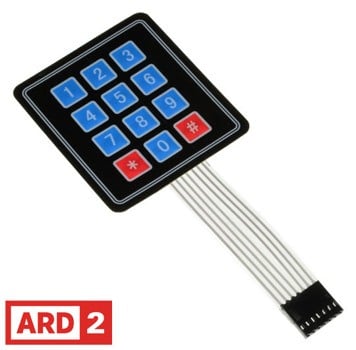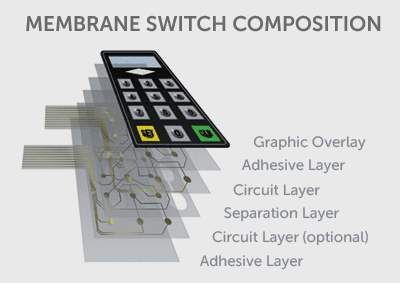Comprehending Membrane Switches Over: The Secret to Reputable and resilient Controls
Membrane layer switches stand for a crucial facet of modern user interface style, mixing capability with strength in various applications. As we check out the details of membrane switches, it ends up being clear that their duty in enhancing control systems is both profound and intricate, raising concerns concerning how best to take advantage of their capacities in future innovations.
What Are Membrane Switches?
Membrane layer buttons are a sophisticated solution in the realm of individual interface innovation, incorporating capability and design seamlessly. These devices serve as an interface between individuals and electronic systems, integrating a number of elements into a small style. Commonly created from adaptable, slim layers of products, membrane layer buttons are created to reply to touch, allowing individuals to engage with machinery and electronic devices efficiently.
The primary elements of a membrane switch consist of a published circuit layer, visuals overlay, and a spacer layer that prevents unintentional activation. The graphic overlay can be customized to mirror brand name identification or individual preferences, enhancing looks while making sure functionality. Membrane switches are generally made use of in different applications, including clinical tools, consumer electronics, and commercial devices, owing to their toughness and resistance to environmental elements such as dampness and dirt.
One of the key benefits of membrane layer switches is their capacity to hold up against deterioration, making them optimal for high-traffic environments. Furthermore, they are lightweight and call for very little area, permitting innovative styles in product growth. Generally, membrane changes represent a reliable and useful choice for contemporary digital interfaces, weding innovation with user-centric layout principles.

Exactly How Membrane Switches Job
The procedure of membrane layer changes rest on a simple yet reliable device that equates user input right into digital signals. These switches contain numerous layers, normally including a graphic overlay, a spacer layer, and a circuit layer. When a customer presses the switch, the top layer flaws, enabling a conductive element in the circuit layer to make call with a matching conductive pad on the underside of the visuals overlay. This get in touch with closes the circuit and sends out an electronic signal to the device, showing that the switch has actually been turned on.
The style of membrane buttons can vary, yet they usually integrate domes or tactile aspects to provide responses to the individual, boosting the general experience. The materials made use of in membrane layer switches, such as polyester or polycarbonate, add to their longevity and resistance to ecological elements, consisting of wetness and dirt. Furthermore, the published circuits are generally encapsulated, which shields them from deterioration over time.

Advantages of Membrane Buttons
One of the primary benefits of membrane buttons is their versatility in layout, enabling them to be tailored to satisfy visit this site right here details individual needs and visual requirements. This versatility includes different sectors, where different forms, sizes, and shades can be utilized to improve customer interaction and aesthetic appeal.
Furthermore, membrane layer switches are recognized for their sturdiness. Constructed from robust products, they are resistant to dust, wetness, and physical wear, which considerably expands their lifespan compared to typical mechanical switches. This sturdiness makes them specifically suitable for high-traffic atmospheres and applications calling for durability.

Moreover, membrane layer switches offer a structured profile, bring about a thinner style that can be incorporated right into numerous gadgets without adding mass. This feature not only boosts the visual appeal yet likewise adds to a more ergonomic product layout.

Applications of Membrane Layer Switches
Straightforward and flexible, membrane buttons discover applications throughout a large range of sectors, including clinical tools, customer electronics, and commercial equipment. In the clinical area, these buttons are integral to devices such as diagnostic devices, patient tracking systems, and infusion pumps, where reliability and ease of cleaning are vital. Their capability to hold up against severe environments and preserve functionality makes them ideal for such applications.
In customer electronics, membrane layer switches are used in items like microwaves, cleaning makers, and remotes - membrane switch. Their streamlined layout permits instinctive customer interfaces, boosting the general individual experience while supplying longevity and resistance to deterioration
Industrial devices also benefits from membrane switches, especially in control panels for machinery and automation systems. These buttons offer protection versus dirt and wetness, guaranteeing consistent performance in tough settings. special info Moreover, their adjustable features permit suppliers to customize them to particular operational demands, improving efficiency and performance.
Selecting the Right Membrane Layer Change
When picking a membrane button, it is important to take into consideration various variables that influence efficiency and suitability for certain applications. The primary factors to consider consist of environmental problems, tactile comments, resilience, and layout specifications.
First, assess the operating environment; switches revealed to moisture, chemicals, or extreme temperatures call for specific materials to make sure long life and functionality. Next, examine the demand for tactile feedback. Depending upon customer communication, some applications may benefit from a responsive feedback to validate activation, while others may like a non-tactile layout for visual factors.
Resilience is one more essential factor; membrane switches must be made to withstand frequent usage, effects, and abrasion. Make certain the picked button can withstand the expected lifecycle, navigate to this site particularly in high-usage situations.
Verdict
In conclusion, membrane layer switches offer as necessary elements in the layout of long lasting and reputable control systems across various sectors. The flexibility of membrane layer changes permits for tailored remedies that satisfy specific functional needs, enhancing their importance in modern-day technology.
Membrane layer switches stand for a vital facet of contemporary user interface design, mixing functionality with durability in numerous applications.Membrane buttons are a sophisticated option in the world of user interface innovation, incorporating performance and layout seamlessly. Normally created from adaptable, slim layers of products, membrane switches are created to react to touch, enabling individuals to connect with machinery and digital devices successfully.
The layout of membrane layer switches can vary, yet they frequently integrate domes or responsive components to provide comments to the individual, boosting the total experience.In conclusion, membrane switches serve as vital parts in the layout of durable and reputable control systems throughout numerous sectors.